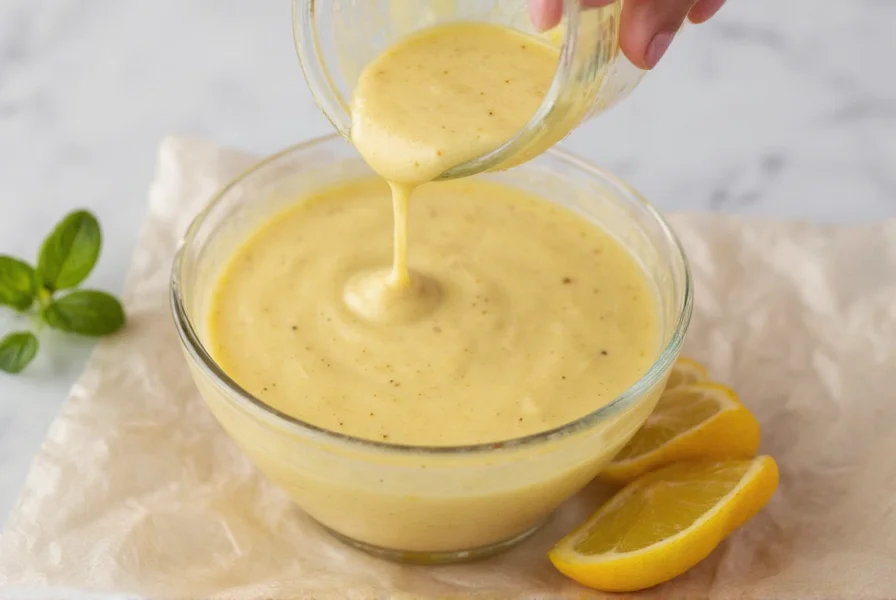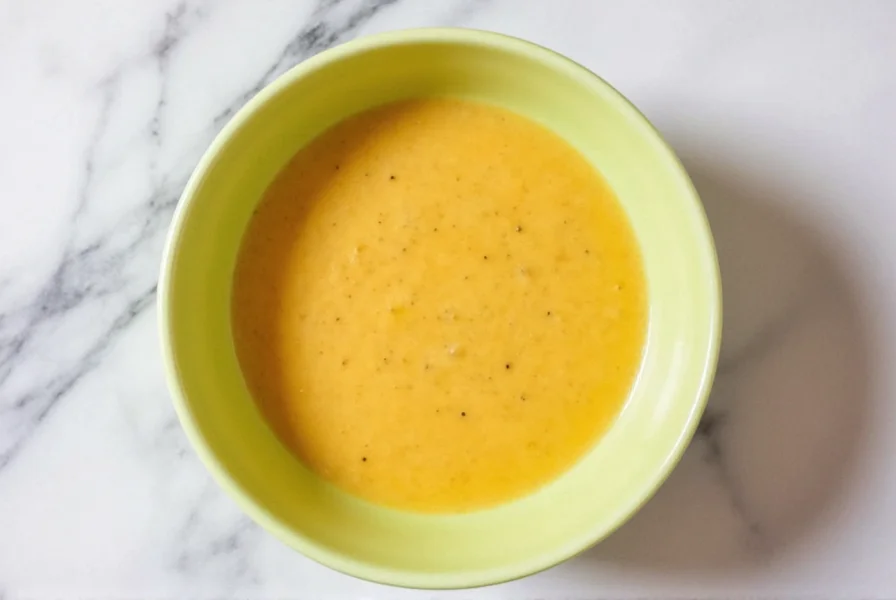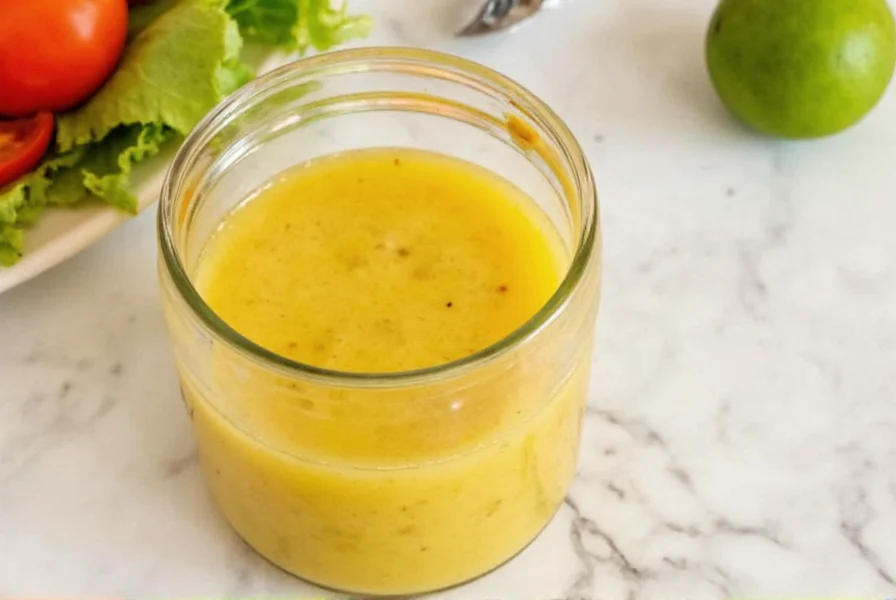The perfect ginger salad dressing combines fresh ginger root, rice vinegar, sesame oil, and a touch of sweetness for balanced flavor. This versatile Asian-inspired dressing works exceptionally well with green salads, grain bowls, and vegetable dishes. A basic ratio of 3 parts oil to 1 part acid with 1-2 tablespoons of freshly grated ginger per serving creates an ideal emulsion that clings to greens without overwhelming them.
Creating exceptional ginger salad dressing starts with understanding the chemistry of its components. Unlike store-bought versions that often rely on artificial flavors and excessive sugar, homemade ginger dressing showcases the vibrant, spicy-sweet complexity of fresh ginger root. This dressing transforms simple salads into memorable meals through its bright, aromatic profile that complements rather than dominates fresh ingredients.
Professional chefs and home cooks alike prize ginger dressing for its remarkable versatility. The active compound in ginger—gingerol—provides not just distinctive flavor but also natural preservative qualities that help maintain dressing stability. When properly emulsified, this dressing creates a silky texture that evenly coats delicate greens like butter lettuce and arugula while standing up to heartier ingredients like roasted vegetables and proteins.
The Essential Ginger Dressing Components
Understanding each ingredient's role ensures consistent results every time you make ginger salad dressing. The magic happens through careful balancing of these elements:
| Ingredient Category | Primary Function | Recommended Options | Proportions |
|---|---|---|---|
| Ginger | Flavor foundation | Fresh grated, paste, or high-quality powder | 1-2 tbsp per serving |
| Acid | Brightness and preservation | Rice vinegar, citrus juice, apple cider vinegar | 1 part |
| Oil | Emulsion base and mouthfeel | Sesame, avocado, or neutral oils | 3 parts |
| Sweetener | Balance and complexity | Maple syrup, honey, or coconut sugar | 1-2 tsp per serving |
| Umami boosters | Depth and savoriness | Soy sauce, tamari, or fish sauce | 1-2 tsp per serving |
Fresh Ginger vs. Ground: What's Best?
While ground ginger offers convenience, fresh ginger root delivers superior flavor complexity for salad dressings. The enzymatic reactions in freshly grated ginger create volatile compounds that provide that distinctive spicy aroma and lingering warmth. When selecting ginger for homemade ginger salad dressing, look for firm, smooth-skinned roots with minimal wrinkles.
Proper preparation matters significantly. Peel the ginger with a spoon (which removes less flesh than a knife), then grate using a microplane for the finest texture. For a smoother dressing without ginger fibers, squeeze the grated ginger through cheesecloth to extract pure juice. This technique prevents fibrous bits from separating in your dressing while maximizing flavor extraction.
Mastering the Emulsion Process
The key to professional-quality ginger dressing lies in proper emulsification. Start by combining your acid components with ginger and sweeteners, whisking until the sweetener dissolves completely. Then, slowly drizzle in your oil while continuously whisking. This gradual incorporation creates microscopic droplets of oil suspended in the acid base.
For foolproof emulsification every time, use these techniques:
- Room temperature ingredients blend more effectively than cold ones
- Start with a small amount of oil (1 teaspoon) before increasing the stream
- Maintain consistent, vigorous whisking throughout the process
- Consider adding 1/2 teaspoon of Dijon mustard as an emulsifier

Perfect Pairings for Ginger Dressing
Ginger salad dressing shines when matched with complementary ingredients. Its bright, spicy profile works particularly well with:
- Leafy greens: Butter lettuce, mizuna, and baby spinach provide delicate bases that won't compete with the dressing's complexity
- Vegetables: Shaved fennel, cucumber ribbons, and roasted sweet potatoes create textural contrast
- Proteins: Seared salmon, grilled chicken, or baked tofu absorb the dressing beautifully
- Crunch elements: Toasted sesame seeds, crushed peanuts, or crispy shallots add dimension
For an exceptional green salad with ginger dressing, combine mixed baby greens with thinly sliced radishes, avocado chunks, and toasted almonds. Toss gently with just enough dressing to coat—about 1-2 tablespoons per serving—to maintain the salad's freshness without sogginess.
Troubleshooting Common Ginger Dressing Issues
Even experienced cooks encounter challenges with ginger dressing. Here's how to solve frequent problems:
- Separation: If your dressing separates, re-emulsify by placing all components in a blender and processing until smooth. Adding a small amount of honey or mustard can stabilize future batches.
- Overpowering ginger: Balance excessive ginger heat with additional sweetener and acid. Next time, use less ginger or remove fibrous pieces after grating.
- Too thin: Increase oil ratio slightly or add a small amount of tahini for thickness without altering flavor significantly.
- Lack of brightness: Boost acidity with a splash of fresh citrus juice rather than additional vinegar for more complex flavor.
Storage and Longevity Tips
Homemade ginger salad dressing maintains peak quality for 4-5 days when stored properly in an airtight container in the refrigerator. The natural preservative qualities of ginger and vinegar help extend freshness compared to other dressings. Before each use, shake or whisk vigorously to recombine ingredients.
For longer storage, freeze portions in ice cube trays, then transfer the frozen cubes to a sealed bag. These frozen ginger dressing cubes can be added directly to salads as they thaw, maintaining flavor integrity for up to 3 months. This method works particularly well for meal preppers creating healthy Asian salad meal prep containers.

Adapting Ginger Dressing for Dietary Needs
This versatile dressing easily accommodates various dietary requirements without sacrificing flavor:
- Vegan version: Substitute honey with maple syrup or date syrup while maintaining the same proportions
- Gluten-free: Use tamari instead of traditional soy sauce for authentic gluten-free preparation
- Lower sodium: Reduce soy sauce by half and compensate with additional umami from nutritional yeast
- Creamy variation: Blend in 1-2 tablespoons of silken tofu for a rich, creamy ginger dressing without dairy
Understanding these adaptations ensures your homemade ginger salad dressing recipe remains accessible while preserving the distinctive flavor profile that makes it so valuable in your culinary repertoire.











 浙公网安备
33010002000092号
浙公网安备
33010002000092号 浙B2-20120091-4
浙B2-20120091-4